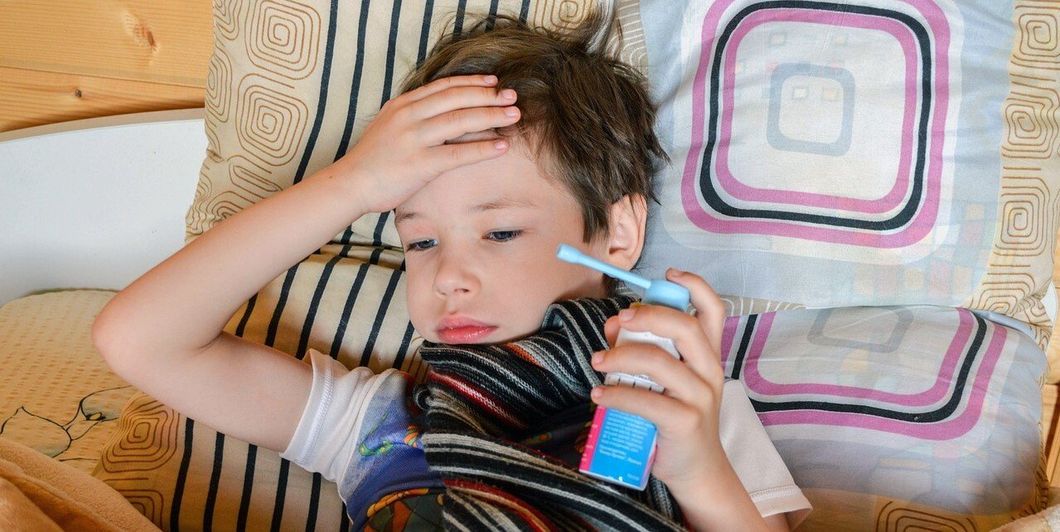Migraine Headaches in Children
Surprising to many parents, headaches are very common in school-age children and teenagers. Experts report that 30% to 50% of school-age children and 50% to 80% of teens get headaches.
Migraine headaches are common, too. They occur in up to 3% of preschoolers, 11% of elementary school students, and 23% of high school students.
Migraine Symptoms
Migraine symptoms often include:
- headache pain on one side of the head (unilateral); moderate to severe pain on both sides of the child's head (bilateral) can also occur
- pulsing or throbbing headache pain
- nausea or vomiting
- sensitivity to light (photophobia)
- sensitivity to sound (phonophobia)
- aversion to odors (osmophobia)
- an aura that starts before the migraine or as the migraine headache begins and which can include visual disruptions, muscle weakness on one side of the body (hemiparesis), or language impairment (aphasia)
- episodes of slow or slurred speech (dysarthria); vertigo; ringing in the ears (tinnitus); double vision (diplopia); visual disruptions; ataxia; decreased levels of consciousness; decreased hearing; or simultaneous numbness and tingling feeling on both sides (bilateral paresthesias), as an aura before the migraine head begins (basilar-type migraine)
Symptoms of migraine headaches are also made worse by routine physical activities, such as walking or climbing stairs.
Diagnosis of Migraine
Although testing such as a head CT, head MRI, sinus x-ray, or lumbar puncture is sometimes done when a child has regular headaches, to rule out other causes, the diagnosis of migraine is usually made simply by the pattern of a child's symptoms. Testing is usually not needed if a child has chronic headaches and a normal neurological exam, unless the child has suddenly started having severe headaches, his headaches are changing (becoming more severe or frequent, for example), or if your pediatrician discovers neurological abnormalities during a physical exam.
As part of the diagnostic criteria for migraines, your pediatrician will check to see if your child:
- has had at least 5 migraine attacks (migraine without aura) or 2 migraine attacks (migraine with aura)
- the migraine attacks last between 1 and 72 hours
- has any signs or symptoms that could indicate that the headaches were being caused by another disorder
Having other family members with migraine headaches would also make a diagnosis of migraine more likely in a child, as migraines do seem to run in families.
Migraine Treatments
There is no cure for migraine headaches, but current migraine treatments can usually help decrease how often your child has migraines and lessen the severity of his migraine symptoms.
These migraine treatments can include:
- avoiding common migraine triggers, including dietary triggers (cheese, chocolates, and citrus fruits, etc.), skipping meals, poor sleep habits, and a lack of exercise, etc.
- taking an age-appropriate dose of a pain reliever (acetaminophen or ibuprofen) as soon as possible when the migraine begins, but avoiding more than three doses a week for headaches, which can sometimes cause rebound headaches
- an anti-nausea medicine, such as Zofran (ondansetron), if nausea and vomiting is a big part of your child's migraine attacks
- a triptan, such as Imitrex (sumatriptan), Maxalt (rizatriptan), or Zomig (zolmitriptan), which are being used more often in children and teens, although none is FDA-approved for these age groups
- a daily prophylactic medicine to prevent headaches if your child is having at least three migraine headaches each month, which might include the antihistamine Periactin (cyproheptadine), the antidepressant amitriptyline, or antiepileptic medications, such as Topamax (topiramate) or Valproate (disodium valproate)
What You Need To Know
- Before puberty, boys get more migraines than girls, but later on, after puberty, girls begin to get more migraines than boys.
- A migraine headache symptom diary, in which you record details about your child's headache -- including when he had it, what may have caused it, and what made it better -- can help you find specific migraine triggers to avoid in the future.
- Migraine variants in children can include benign paroxysmal vertigo, cyclic vomiting syndrome, and abdominal migraine.
- Although many children with migraines continue to have headaches as adults, about 25% will outgrow their headaches.
- A deficiency in coenzyme Q10 may contribute to migraines in some children, and neurologists sometimes check coenzyme Q10 levels when evaluating children with migraines.
- A pediatrician neurologist can help evaluate and treat your child with migraine headaches.
By Vincent Iannelli, M.D., About.com Guide
About.com Health's Disease and Condition content is reviewed by the Medical Review Board

